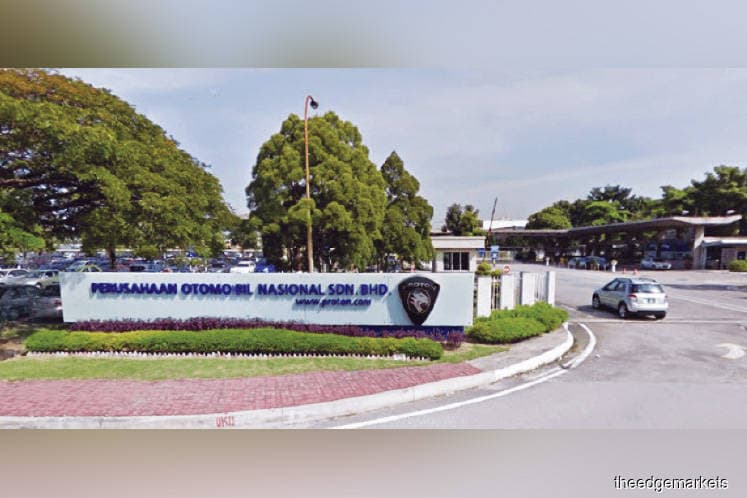
This article first appeared in The Edge Malaysia Weekly on February 12, 2018 - February 18, 2018
APART from a 30% reduction in price by parts vendors, Perusahaan Otomobil Nasional Sdn Bhd (Proton), under new chief executive Dr Li Chunrong, also aims to slash dealers’ margins to a fixed 3% from between 3.8% and 4.2%.
Li has introduced these measures with the aim of lowering costs at the national automotive company in order to make it competitive both locally and internationally.
However, some of the measures have caused uneasiness among Proton’s dealers and parts vendors.
Talking to The Edge on condition of anonymity, some Proton dealers say they are being squeezed by the new margins at a time when sales are anaemic. Last year, Proton sold a total of 70,991 units, down 1.8% year on year.
“Our margins have been cut since early this month. At the same time, we have been asked to upgrade our dealerships to 3S, which requires a lot of investment,” says one of the dealers.
“Eighty per cent of Proton dealers sell an average of 10 to 15 cars a month. How can these dealers, who are not making a lot in the first place, cope with the reduced margins and increased business costs?” asks another.
The new business requirement will increase overhead cost by at least three times, they claim.
Another dealer says savings from the lower margin will not translate into lower prices for Proton cars, which would benefit car buyers. Instead, Proton has increased the price of cars it sells to its dealers.
DRB-Hicom Bhd did not respond to questions sent by The Edge on the cut in the dealers’ net margin. DRB-Hicom has a 51% stake in Proton Holdings Bhd, which is the parent company of Proton.
Last month, reports surfaced that Proton requires all its dealers and service centres to upgrade their premises to 3S, which means sales, service and the supply of parts will all be under one roof.
According to the dealers, the requirement involves investments of between RM3 million and RM5 million per centre, depending on the location.
It does not take into account whether an area actually requires a 3S centre, the availability of such a premise and the approval required from the local authorities, they say.
There are about 280 Proton dealerships and service centres nationwide. To comply with the new requirement, a number of dealers and service centres may have to either merge or close shop.
So far, at least five dealers have decided to upgrade their showrooms to 3S by taking advantage of incentives provided by Proton, according to news reports. It is not known what the incentives are.
Proton Edar Dealers Association president Armin Baniaz Pahamin tells The Edge that the association welcomes the direction forward for all dealers to upgrade to a 3S centre.
“We are just not happy with the timing given and other internal policies that are affecting our sales,” he says.
The dealers whom The Edge spoke to claim that some of the measures practised by Proton in the past effectively reduced the number of Proton cars being registered. For example, the car maker used to push its models to dealers without taking into consideration the model, variant and colour sought by buyers.
“Proton allocated cars without taking our requests into consideration and in the process, used up our credit line and depleted our working capital.
“Some dealers were charged five-digit interest every month when they were selling an average of 10 cars. Then, when we had customers wanting a specific model with a specific variant and colour, we did not have the stock.
“And we also could not order the specific stock that the customer wanted because we had used up our credit, and we could not pay for the new stock,” says one of the dealers.
Another dealer says, “Let’s say we get a credit line of RM500,000 and we are allocated 10 units of models priced at RM50,000 each, we would have utilised the credit line already in one single order. Our account would then be suspended from further allocation of cars.
“The stocks that we have might not necessarily be what the customers want. Once we have utilised the credit line, we will have to pay Proton within 14 working days. If we fail to do so, we will be charged an interest of 10.35% per annum.”
According to Armin, Proton will stop offering credit facilities to dealers starting March 1. The dealers will have to buy Proton’s stock with cash — something not all of them can do. This will further complicate the situation and will not help with the car maker’s aim of selling more cars.
In other words, while the previous practice of providing credit lines burdened the dealers, Proton’s decision to stop offering these facilities will also hurt its dealers.
According to a report by a local English daily, Li has unveiled his 10-year plan for Proton, which aims to get the company back in the black as soon as is practicable. At the same time, by the end of this year, Proton cars will have the same quality standard as Geely, he said.
In terms of target, Li wants to increase Proton’s sales number to 200,000 units annually by 2020, which means an increase of 129,000 units in three years. So far, only one new model has been confirmed — a rebadged Geely Boyue SUV, which will be introduced by the end of this year.
It is believed that Proton will launch one new model every year over the next three years to 2020, and upgrade four existing models to boost its sales number. The company will also transfer all its manufacturing operations to its Tanjung Malim plant within five years.
Save by subscribing to us for your print and/or digital copy.
P/S: The Edge is also available on Apple's AppStore and Androids' Google Play.